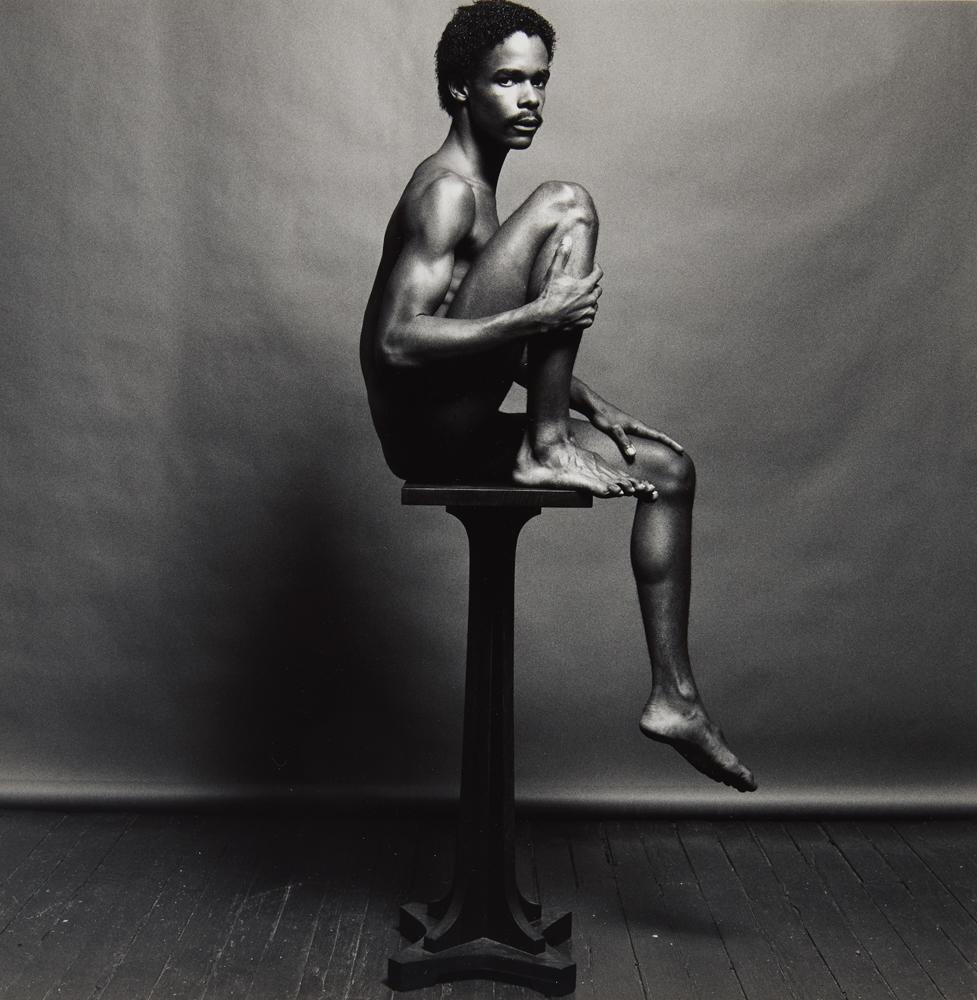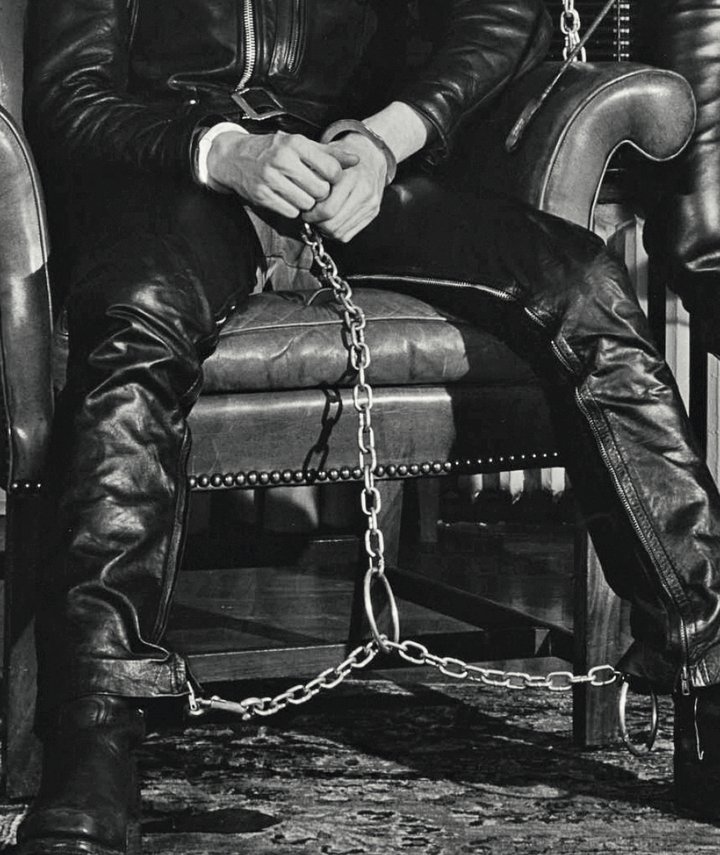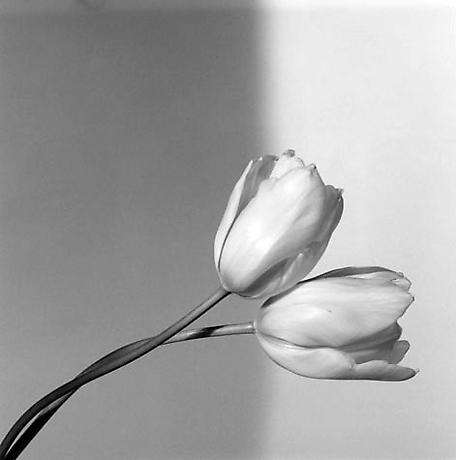robert mapplethorpe: phillip prioleau, NYC (on pedestal side facing)
March 2020
American studio photographer, Robert Mapplethorpe’s (1946 – 1989) lens has roved across taut skin, muscled limbs, leather harnesses, fabrics, flowers and phalluses. Conferring a classical glow to these subjects, his identifiable photographic style is marked by his meticulous and flawless black and white technique that emphasises the sculptural beauty of his tight and geometric compositions. Speaking about his portrait photography he said, “I want the person to look at least as interesting as they can look … I try to catch something unique in him that no one else has/ That quality is what I want to come across, not the superficial prettiness, even though I love photographing beautiful people.”[1]

In 1978, Mapplethorpe would produce his infamous portfolios of themed imagery, “X” of masochistic images and “Y” of floral still lives. These portfolios would highlight the formal connection between flowers and genitalia; using metaphor and allusion to breathe desire and life into flowers, while ossifying sex acts into cool geometries. This image, Phillip Prioleau, NYC (on pedestal Side Facing), 1979 was created following this period, when Mapplethorpe worked on his subsequent portfolio that could complete the series, “Z” nude portraits of African American Men released in 1981. Prioleau, who Mapplethorpe hired to work in his studio and then convinced to pose, regularly featured in the Z portfolio and sat for images that typify Mapplethorpe’s classicising figure studies of this period.

This elegant and crisp arrangement of Prioleau perched on a pedestal highlights Mapplethorpe’s undeniable interest in Classical Greek and Roman sculpture. Admiring this genre for its pursuit of idealise male forms, Mapplethorpe sought to reinterpret this practice by inviting chiselled young men to strike Michelangelo like poses. In this example, Prioleau is lit with a heavenly beam of light, creating a chiaroscuro effect that brings the mottled shimmer of the sitter’s muscle to the fore. In many of Mapplethorpe’s images, he used beauty as a means to provoke and challenge viewers to not avert their gaze from the troubling societal topics of his time. Here, the idealised image of African American man, sitting prized on a pedestal, is at odds with the troubling African American race relations of the time — revealing a deeper agenda that runs throughout Mapplethorpe’s work.

This image of Prioleau also foreshadows the movement in the early 1980s from taking erotic pictures — which have always occupied a disproportionate importance in his canon — to his concentration of nudes, portraits and still lifes. Remarking “I’ve already recorded that,” Mapplethorpe’s icy and idealised forms — which is beginning to become apparent in this image — would take centre stage for the rest of his career until his death in 1989, at age 43. The legacy of Mapplethorpe’s work would crest in 1990, when prosecutors indicted the Cincinnati Contemporary Art Centre, along with its director, on obscenity charges for exhibiting a touring exhibition of his work, interpreting his elegant geometries as offensive S&M scenes paid for using public funds (the National Endowment for the Arts granted $30 000 towards the exhibition). While Art Centre ultimately won the case, conservative politicians, led by North Carolina Senator Jesse Helms, led a national debate on the self-indulgent excesses of culture and art during this time. Through this case, the name Mapplethorpe in American culture, would go on to become a byword for controversy and the culture wars of the 1990s — speaking to the frictions, tensions and contradictions that give Mapplethorpe’s images their undeniable energy.
END.
This text was originally commissioned and published by Webb’s Auction House.
[1] Mapplethorpe, quoted in “Robert Mapplethorpe, Portraitist and Photographer of the Erotic.” In Robert Mapplethorpe: Perfection in Form (New York: teNeues, 2009).